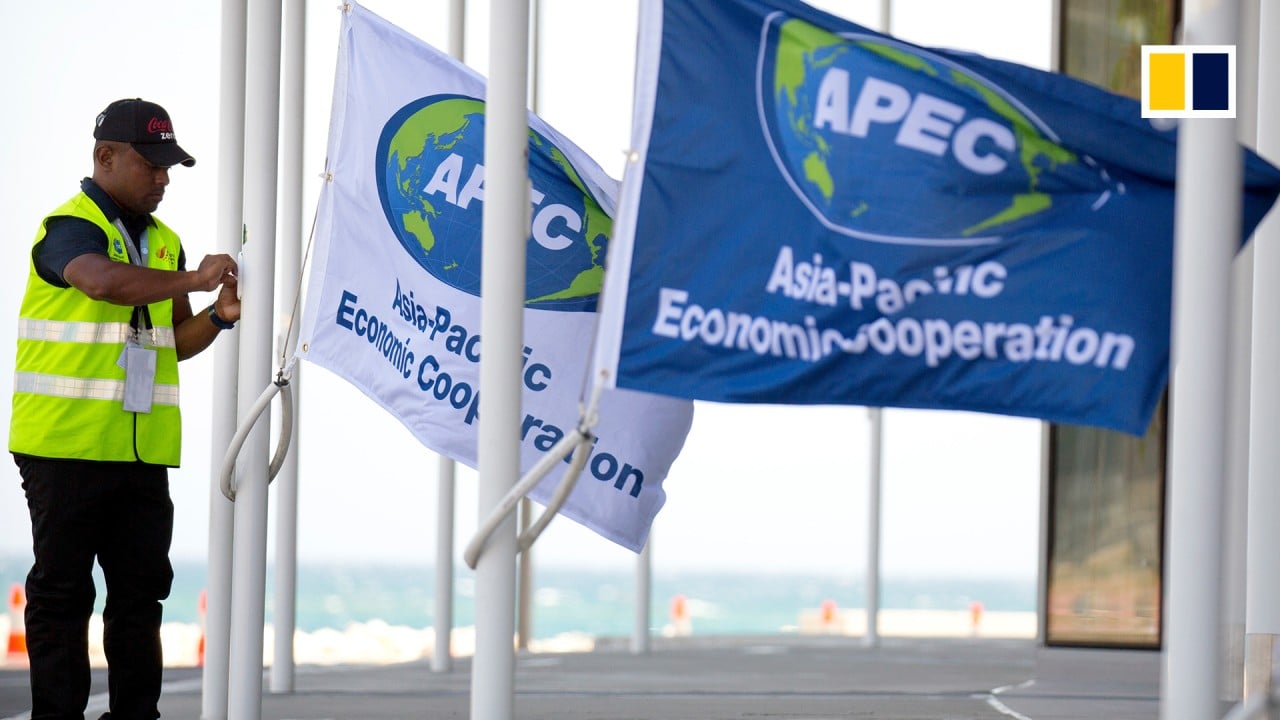
How Apec can help drive growth amid fresh optimism for Asia-Pacific cooperation
- With Trump out of the frame and potentially strong New Zealand leadership of Apec, region-wide collaboration is once again high on the agenda
- Given its position at the heart of the region’s most recent trade agreements, there is huge potential for Apec to liberalise and boost growth in the Asia-Pacific
After more than 12 years supporting Hong Kong business input to the 21-member Asia-Pacific Economic Cooperation (Apec) forum, I am, with some sadness, stepping down this month.
Many say its only material achievement is the precious Apec Business Travel Card. It might not be very useful in the midst of the pandemic’s international travel lockdowns, but it has always been a source of deep envy for those travellers so frequently stuck in interminable airport immigration queues.
I am reminded of a meeting in the spring of 2011, when the US chaired Apec, and its motif for the year was “get stuff done”. Hong Kong’s then-Apec Business Advisory Council (Abac) member Anthony Nightingale flew in to the still-snowy Big Sky, Montana, just a stone’s throw from Yellowstone Park, to present a business-sector proposal for Apec to adopt a “non-binding investment principles” document.

01:58
What is Apec all about?
Within minutes of the discussion starting, lawyers joining the Australian delegation butted in, seeking to amend wording. The US chair called the lawyers to a halt, insisting the legal contribution was neither helpful nor welcome. “This is a ‘non-binding’ proposal. If a member does not want to adopt it, they don’t have to. Let’s be aspirational here,” he said in a very “get stuff done” tone.
If such a proposal had been made in a treaty-making organisation, lawyers would have swarmed all over it. The negotiation process would have stretched for years. The document would have been 300 pages long, not three. Any organisation that can keep the lawyers at bay in this fashion definitely has my vote.

03:29
RCEP: 15 Asia-Pacific countries sign world’s largest free-trade deal
Perhaps most distinct is Apec’s dedication to best-practice learning and capacity-building and its formal embrace of the business voice.
There would be convergence around what the majority believed was best practice but no attempt to draft strict rules. Quietly, and without further external pressure, new rules on waste management infrastructure or financing “big infrastructure” would emerge, economy by economy.
The work was not sexy. It was technical and unpolitical. It did not grab any media headlines, but its value cannot be underestimated.

01:15
China-Australia trade: Beijing set to ban nearly US$400 million worth of Australian wheat imports
Progress over the past four years has been disappointing. Former US president Donald Trump’s “America first” mantra was totally at odds with the core Apec principles of inclusive growth. Lip service to these core principles remained firm, but the unilateral spirit of the US administration made practical progress heavy going.
The clear and simple Apec aspiration towards “free and open trade and investment” in the region by 2020, agreed in Bogor in Indonesia in 1994, was self-evidently frustrated.

04:45
US, China and the “doomsday scenario” for the global trading system
For the long term, I still see huge potential in Apec’s informal potential to liberalise and drive growth in the Asia-Pacific, not least because of its pivotal position at the heart of all of the region’s most recent trade agreements.
The 11 members of the CPTPP are all Apec members. All but three of the members of the recently signed Regional Economic Partnership (RCEP) are also Apec members. The CPTPP and RCEP have seven members in common.
It is perhaps difficult, from the depths of the pandemic recession, to feel the lift these complementary regional groupings can provide across the Asia-Pacific. The impetus is there, though, and will be felt increasingly strongly in the coming years. I am sad I will not be part of it, but from afar I will certainly be cheering it on.
David Dodwell researches and writes about global, regional and Hong Kong challenges from a Hong Kong point of view

